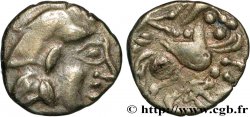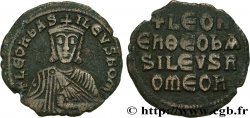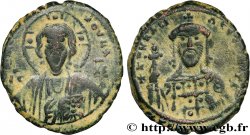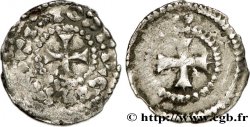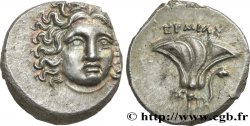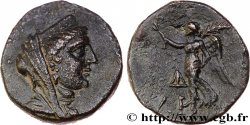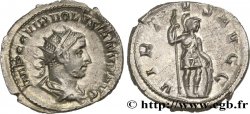Live auction - bga_622720 - PICTONES (Area of Poitiers) Statère d’électrum à la main
You must signin and be an approved bidder to bid, LOGIN TO BID. Accounts are subject to approval and the approval process takes place within 48 hours. Do not wait until the day a sale closes to register. Clicking on "BID" constitutes acceptance of the terms of use of cgb.fr private live auctions.
Bids must be placed in whole Euro amounts only. The sale will start closing at the time stated on the item description; any bids received at the site after the closing time will not be executed. Transmission times may vary and bids could be rejected if you wait until the last second. For further information check the Live auction FAQ
All winning bids are subject to a 18% buyer’s fee.
All winning bids are subject to a 18% buyer’s fee.
| Estimate : | 1 200 € |
| Price : | 1 150 € |
| Maximum bid : | 1 350 € |
| End of the sale : | 08 December 2020 15:56:06 |
| bidders : | 2 bidders |
Type : Statère d’électrum à la main
Date: IIe - Ier siècle avant J.-C.
Mint name / Town : Poitiers (86)
Metal : gold
Diameter : 20 mm
Orientation dies : 9 h.
Weight : 7,61 g.
Rarity : INÉDIT
Coments on the condition:
Droit frappé de manière confuse mais très beau revers particulièrement stylisé et éloigné des frappes classiques. Beau métal bien jaune
Predigree :
Exemplaire provenant de la collection J. H
Obverse
Obverse legend : ANÉPIGRAPHE.
Obverse description : Tête (d’Ogmius) à droite, la chevelure en grosses mèches, d’où partent des cordons perlés.
Reverse
Reverse legend : ANÉPIGRAPHE.
Reverse description : Aurige tenant une couronne dirigeant à droite un cheval androcéphale ; dessous, une main.
Commentary
Cette monnaie présente un nombre important de particularités qui nous semblent totalement inédit ! Le métal, contrairement au monnayage habituel, semble en bon or et est de poids très lourd.
Au droit, le style, bien que très brouillon est encore très orienté vers l’Armorique, les Namnètes notamment. Au revers, aucun symbole ne sort de la bouche du cheval mais il nous semble distinguer un motif en bord de tranche, reste d’un étendard ??
Cette monnaie pourrait être plus ancienne que le monnayage traditionnel des statères à la main, prototype des futurs statères ???.
This coin presents a significant number of particularities that seem to us to be totally unprecedented! The metal, unlike the usual coinage, seems to be good gold and is very heavy. On the obverse, the style, although very rough, is still very oriented towards Armorica, the Namnetes in particular. On the reverse, no symbol comes out of the horse's mouth but we seem to distinguish a motif on the edge of the edge, the remains of a standard?? This coin could be older than the traditional coinage of hand-made staters, prototype of future staters???
Au droit, le style, bien que très brouillon est encore très orienté vers l’Armorique, les Namnètes notamment. Au revers, aucun symbole ne sort de la bouche du cheval mais il nous semble distinguer un motif en bord de tranche, reste d’un étendard ??
Cette monnaie pourrait être plus ancienne que le monnayage traditionnel des statères à la main, prototype des futurs statères ???.
This coin presents a significant number of particularities that seem to us to be totally unprecedented! The metal, unlike the usual coinage, seems to be good gold and is very heavy. On the obverse, the style, although very rough, is still very oriented towards Armorica, the Namnetes in particular. On the reverse, no symbol comes out of the horse's mouth but we seem to distinguish a motif on the edge of the edge, the remains of a standard?? This coin could be older than the traditional coinage of hand-made staters, prototype of future staters???







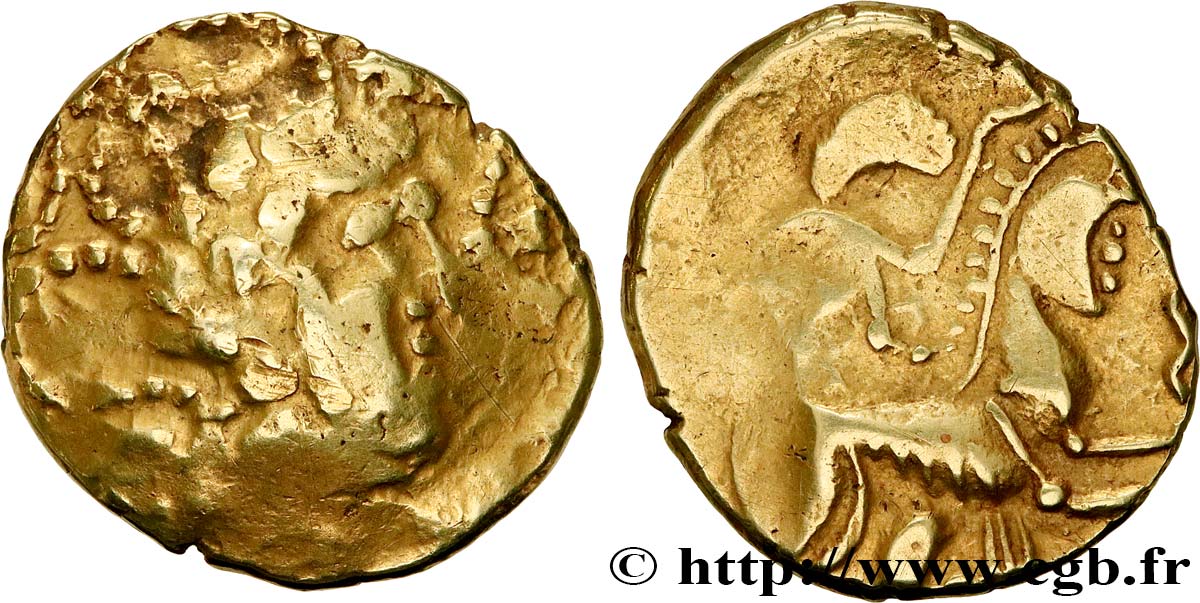
 Report a mistake
Report a mistake Print the page
Print the page Share my selection
Share my selection Ask a question
Ask a question Consign / sell
Consign / sell
 Full data
Full data


